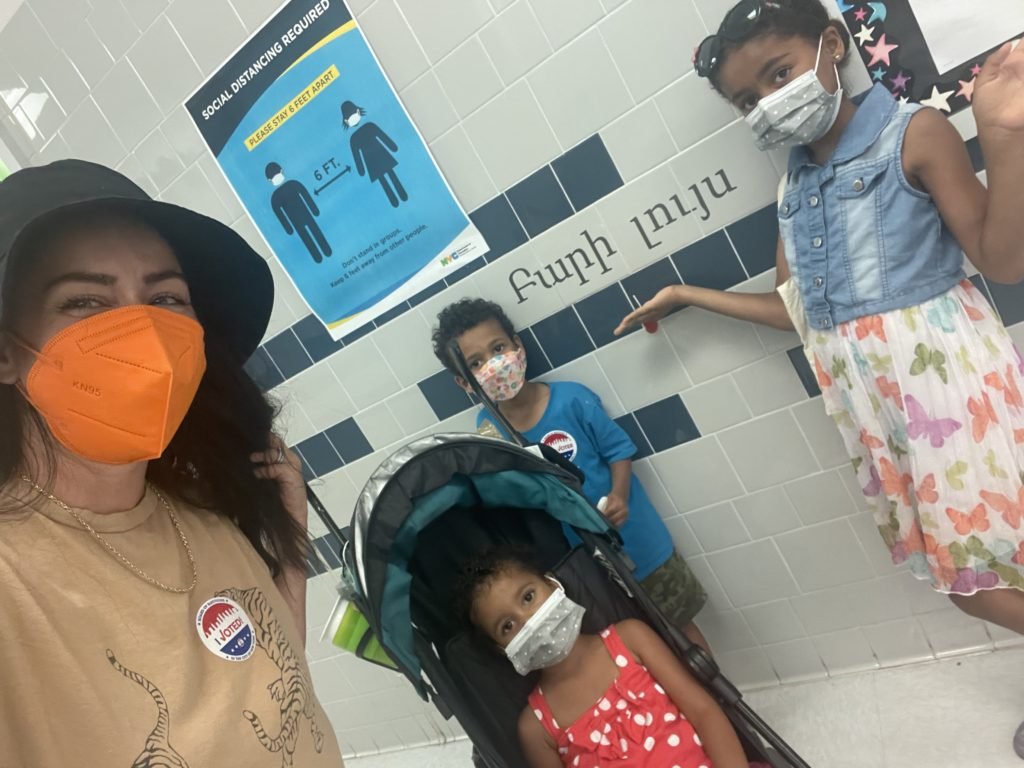
When Christine Serdjenian Yearwood learned that the New York City Department of Education (DOE) was gathering input and feedback from citizens for the new culturally responsive curriculum it plans to implement next year, she jumped into action. As a former NYC public school teacher, she felt compelled to get involved, merging her passion for education with her history of advocacy to make a difference for Armenian-Americans like her three children in America’s largest school system. As the founder and leader of UP-STAND, Serdjenian is an advocate for improving accessibility and inclusivity for pregnant women and their families. Having served on the board of Birthright Armenia and GOALS, her ties to Armenia and its issues are just as strong. With this potential opportunity to introduce Armenian cultural literacy into the school district’s curriculum, the coming months will be crucial for the community to make its voice heard by decision-makers.
The DOE’s project, known as Mosaic, is focused on teaching English and math in a way that reflects the city’s diversity, helping students to build understanding and appreciation for their own culture and others. This aspiration resonated with Serdjenian immediately. “As a public school parent here in NYC, I want my children to see themselves reflected and affirmed in the curriculum, as every child should be,” she said. “It is so important for our children to see themselves in the curriculum and for others to see them, too. This could be that chance for Armenian-American children here.”
Serdjenian’s lifelong desire to have her own culture and those of others recognized and included within our education system is one familiar to many Armenian-Americans. “For much of my life, I’ve had to explain to people where Armenia is, about Armenian issues, what it is like to be Armenian and/or SWANA in the United States, what we go through both past and present. In high school, I taught my peers about Armenian history; in college, I gathered students for Armenian film screenings. I want it to be different for the next generation, including for my own kids. I want our culture, our history, our suffering, our contributions and our triumphs to be known here. Knowledge is power,” stressed Serdjenian.
Serdjenian has received support from other ethnic interest groups, as this is a struggle which isn’t unique to Armenian-Americans. For example, she first learned about Mosaic from the Coalition for Asian American Children and Families, which she says has been very affirming and supportive of including Southwest Asians and Armenians in their educational advocacy. She’s also connected with Make Us Visible, the Asian American Education Project, the United Federation of Teachers’ Asian Heritage Committee, APALA, and Congresswoman Meng‘s office (D-NY). She also reached out to like-minded Armenian supporters she recognized from articles about them in the diasporan press. These include Sophia Armen, Suzie Abajian and Thomas Simsarian Dolan, the last of whom she learned about from his 2020 article in the Weekly about Artsakh and Ethnic Studies. They used their experience with an earlier Armenian-inclusion curriculum campaign in California through the Armenian-American Action Network to create one for New York. Together, they strategized, drafted letters, formed alliances with other organizations and built a campaign landing page. “I think it’s so emblematic of the Armenian community that they have spent their time and efforts in collaboration with me, when I reached out as a total stranger,” said Serdjenian. “I can’t say enough about how much time and effort they’ve dedicated to this cause and how grateful I am on behalf of my family and all of New York.”
Mosaic is an important opportunity because, in Serdjenian’s experience with advocacy, “we so often have to try to change things retroactively, which is really hard and slow work. I saw the Mosaic info/input sessions advertised and have been hopeful that we can proactively raise enough awareness to be included initially by the curriculum developers.” Despite a lack of information and response from the NYC Department of Education (DOE) regarding the campaign at this time, there has been some positive movement recently with legislation regarding Asian American and Armenian studies in California, Connecticut, Illinois, Massachusetts and New Jersey. Rep. Carolyn Maloney (D-NY-12th district, Serdjenian’s own) recently introduced the Armenian Genocide Education Act to provide funding for Library of Congress educational programs about the Armenian Genocide. In New York State, legislation S6359A and A7260, still in committee, seek to include the teaching of Asian American history and civic impact in NY public schools. She also points to The Hidden Voices Project, which is going to be tested in spring 2024 and will include seven lesson plans on Asian Americans. Serdjenian hopes all of these factors help facilitate the DOE’s inclusion of Armenian-Americans among the many groups that make up the vibrant fabric of New York City.
In the coming months, the Mosaic curriculum will be rolled out to classrooms. But it’s not too late to weigh in. To show support for the inclusion of Armenians within this framework, the Armenian-American Action Network has a pre-filled letter that readers can send directly to the Department of Education with a few clicks. Organizations can also fill out a form to add their name to a letter alongside elected officials that will be delivered separately to some of the DOE’s highest officials for Armenian inclusion.




Great article on the power of individual citizens & advocacy groups to make their voices heard & join together to implement positive change in bringing about true inclusive education.